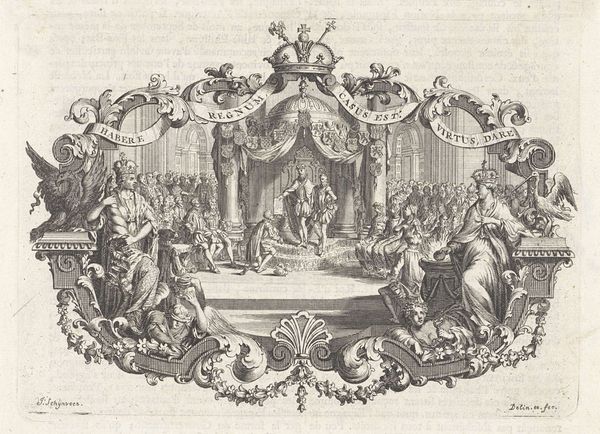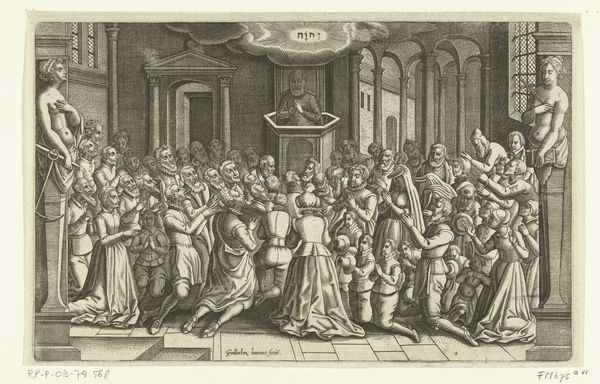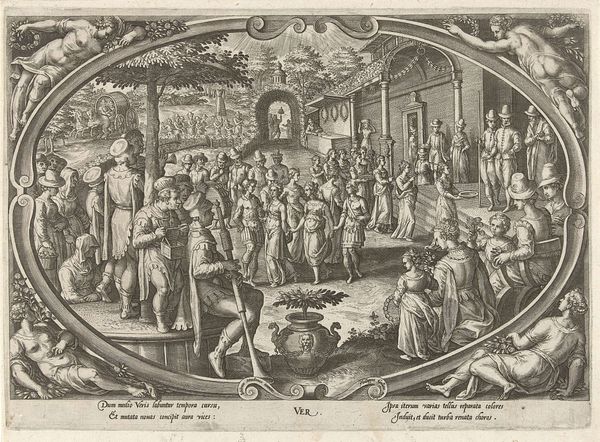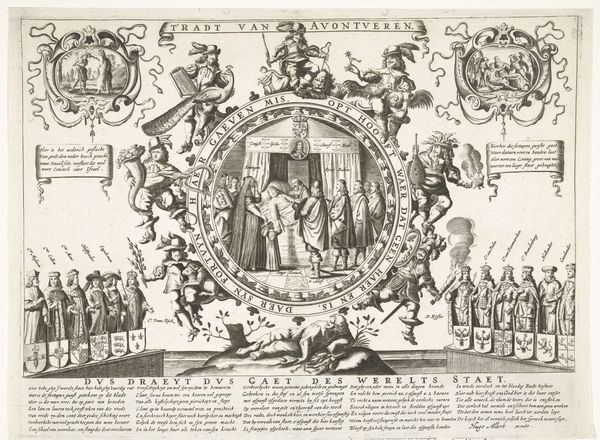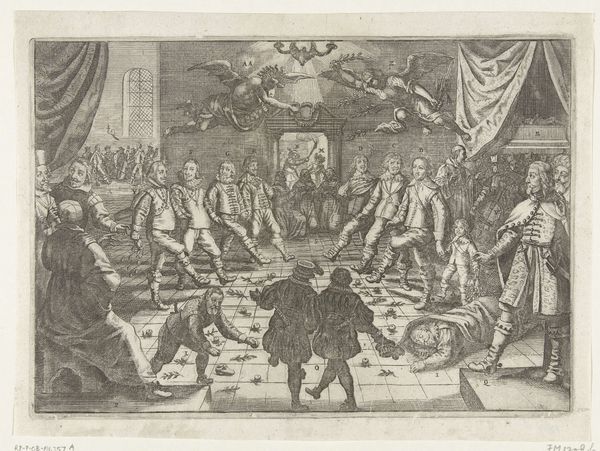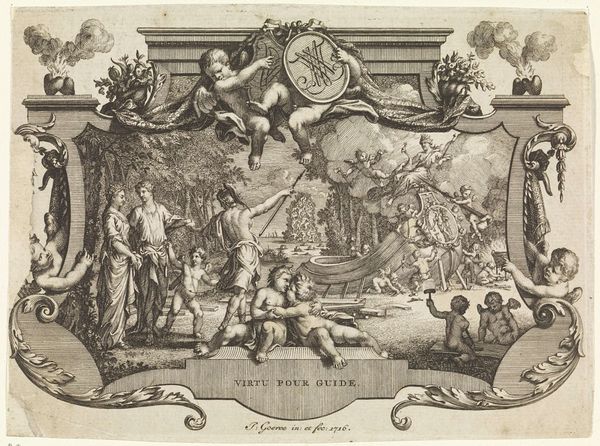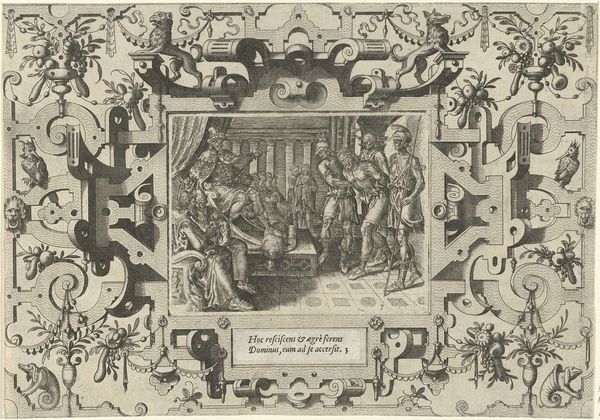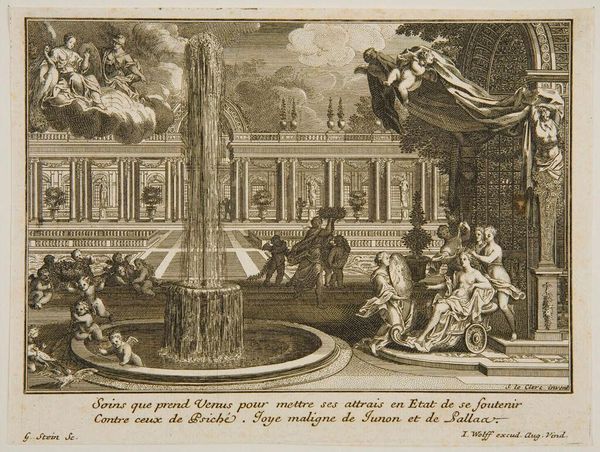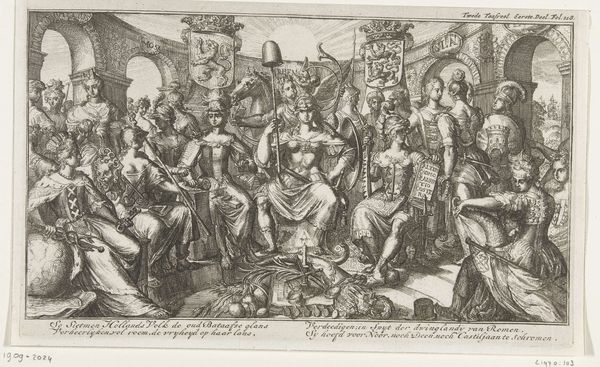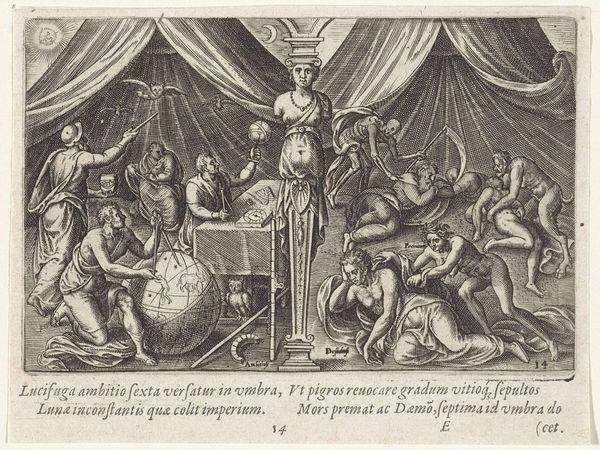
print, engraving
#
baroque
# print
#
history-painting
#
engraving
Dimensions: height 56 mm, width 111 mm
Copyright: Rijks Museum: Open Domain
Bernard Picart made this print, “Koning op zijn troon,” using etching and engraving, techniques that were highly developed by the 18th century. These processes involve meticulously incising lines into a metal plate, which is then inked and printed. Look closely, and you can see how Picart used these linear marks to create a sense of depth and detail, from the regal figure on the throne to the ornate architectural setting. The image is full of texture and pattern, achieved through the repetitive action of the engraver’s hand. But there’s another kind of labor at play here, too. Picart was part of a growing print industry, catering to a public hungry for images. Prints like this one, small in scale, were often bound into books or sold as individual sheets, contributing to an expanding market for visual culture. By understanding the processes behind this print, and the social context in which it was made, we can appreciate its value not just as a work of art, but as a product of its time.
Comments
No comments
Be the first to comment and join the conversation on the ultimate creative platform.
